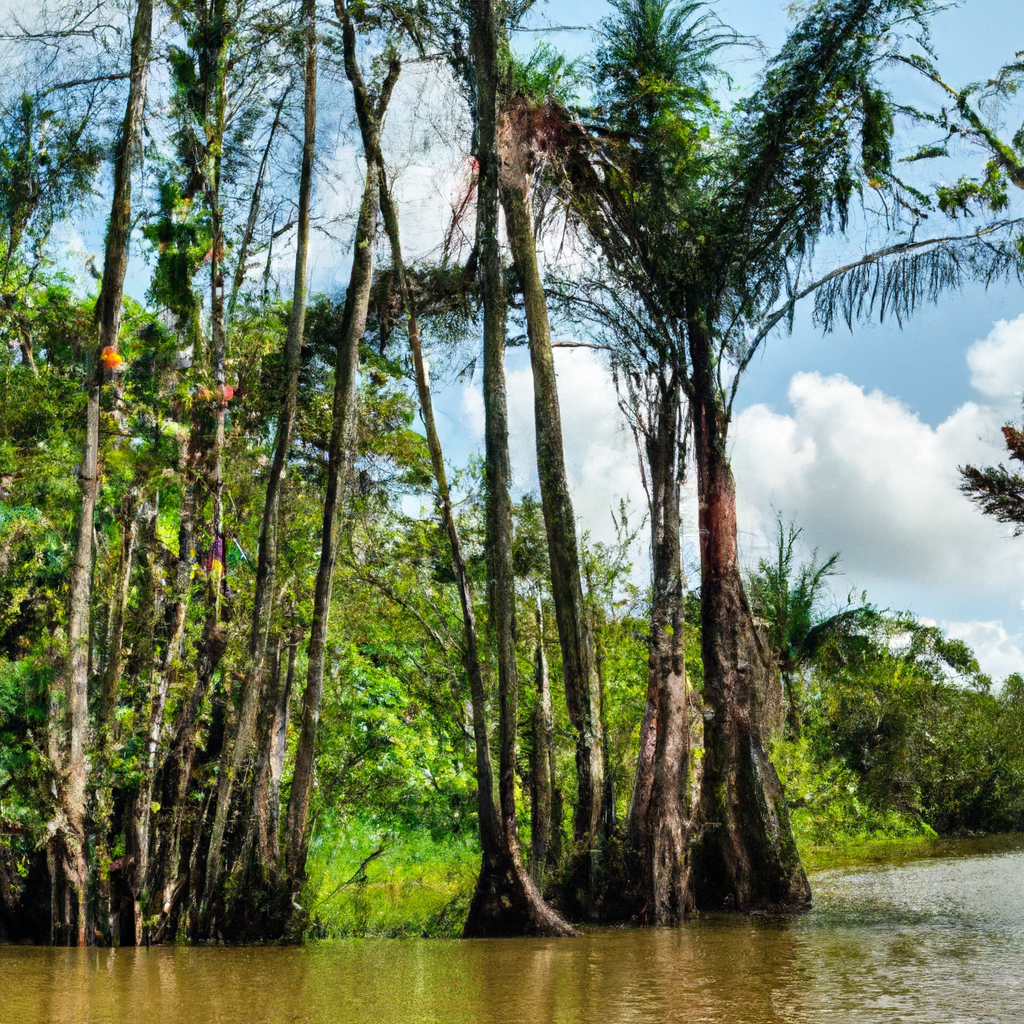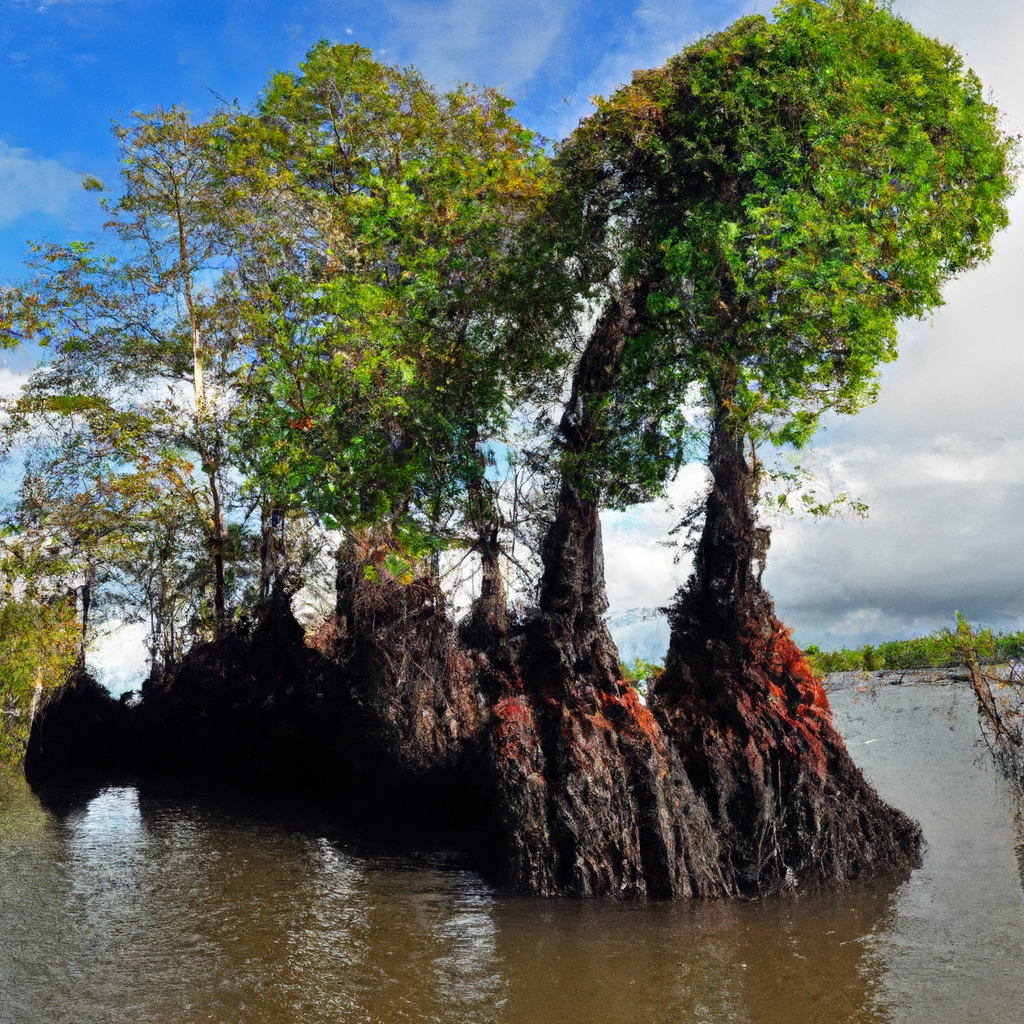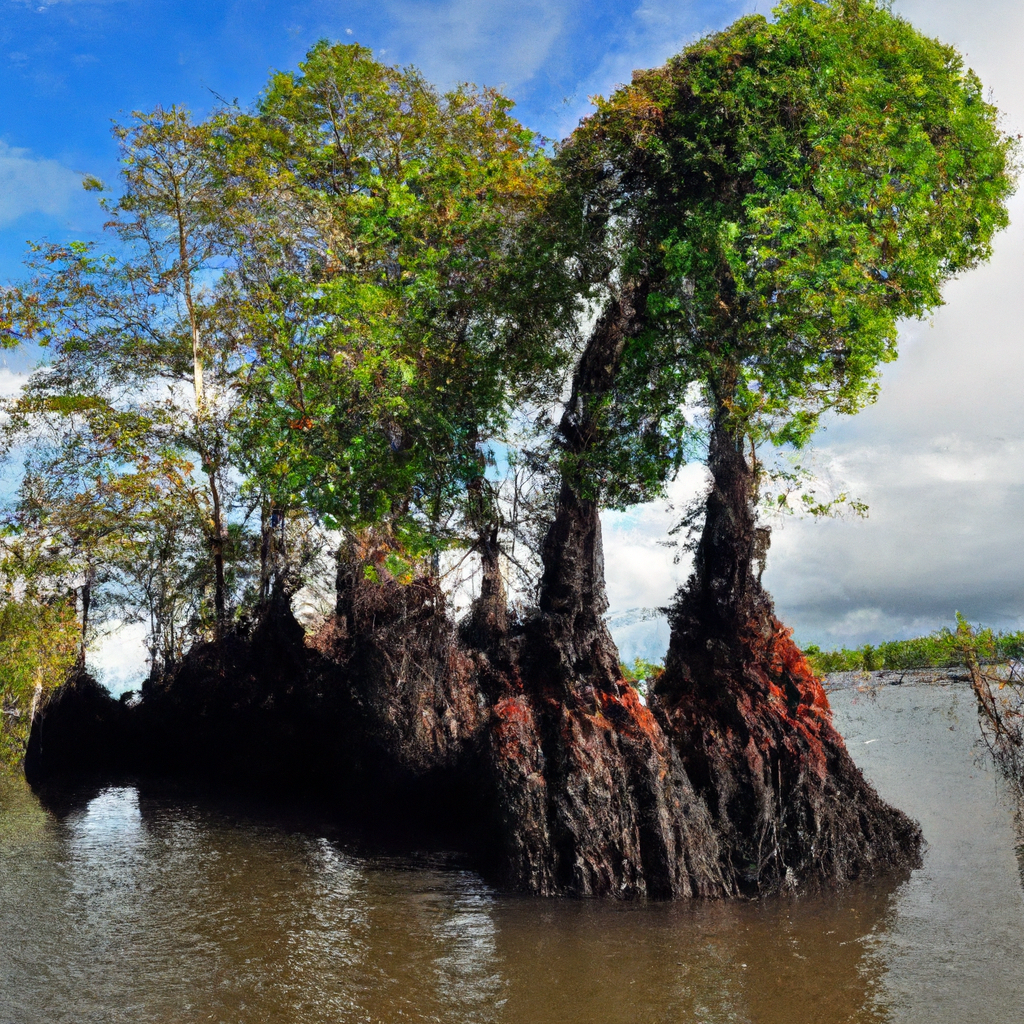Are you planning a trip to Suriname and curious about what kind of weather awaits you? Look no further! In this article, we’ll give you a brief overview of the climate in Suriname and what you can expect during your visit. Suriname, a small country located in South America, experiences a tropical rainforest climate for most of the year. With high temperatures and humidity, it’s important to be prepared for hot and sticky weather. However, don’t let that deter you from exploring this beautiful country, as Suriname’s natural beauty and diverse wildlife make it a must-visit destination for any nature enthusiast. So pack your sunblock and get ready to experience the unique climate of Suriname!
Climate Overview
Suriname, located on the northeastern coast of South America, experiences a tropical climate with distinct wet and dry seasons. As a result of its geographical location just above the equator, Suriname enjoys warm weather throughout the year. The country is characterized by diverse landscapes, including coastal areas, rainforests, and mountainous regions, each with its own unique climate patterns. Understanding the climate of Suriname is vital for planning your visit and making the most of your time in this breathtaking country.
Geographical Location
Suriname is nestled between Guyana to the west and French Guiana to the east. Its northern border is the Atlantic Ocean, providing beautiful coastal vistas and sandy beaches. The country’s equatorial position means it lies in close proximity to the Inter-tropical Convergence Zone, which influences its climate. Suriname’s location also contributes to its lush rainforests and an abundance of biodiversity.
Tropical Climate
Suriname’s tropical climate means that it experiences high temperatures and humidity year-round. The average annual temperature ranges from 26°C to 30°C (79°F to 86°F). The country receives ample rainfall, especially during the wet season, contributing to its verdant landscapes. Suriname lies outside the hurricane belt, so it is generally spared from the devastating storms that affect other parts of the Caribbean during hurricane season.
Weather Patterns
Suriname has two distinct seasons: the rainy season and the dry season. These seasons dictate not only the weather conditions but also the activities and experiences available to visitors. Understanding the characteristics of each season will help you plan your trip accordingly and ensure you make the most of your time in Suriname.
Rainy Season
Duration
The rainy season in Suriname typically begins in May and extends through July, with some variation from year to year. During this period, you can expect frequent afternoon showers and occasional thunderstorms. Despite the rain, there are still plenty of ways to enjoy Suriname’s natural beauty and cultural offerings.
Average Precipitation
Throughout the rainy season, Suriname receives an average precipitation of around 250 millimeters (10 inches) per month. The rain helps maintain the lush foliage of the rainforests and supports vibrant ecosystems. While the rain may deter some tourists, it brings out the beauty of Suriname’s flora and fauna, making it a paradise for nature enthusiasts and photographers.
Impacts on Tourism
The rainy season may result in some limitations for tourists, as heavy rainfall can affect outdoor activities such as hiking and wildlife spotting. However, it’s also a great time to visit if you prefer a quieter and more serene experience, as the tourist crowds tend to thin out during this time. Many hotels and tour operators offer discounted rates during the rainy season, making it an affordable option for budget travelers.

Dry Season
Duration
Following the rainy season, Suriname transitions into its dry season, which typically runs from August to November. The dry season brings drier and sunnier weather, creating optimal conditions for outdoor adventures and exploration. It is undoubtedly a popular time to visit Suriname due to the abundance of activities available.
Temperature Range
During the dry season, temperatures in Suriname can vary between 28°C and 32°C (82°F to 90°F). The dry heat allows visitors to fully embrace the tropical atmosphere and engage in activities such as swimming, snorkeling, and hiking. The warm weather also invites leisurely beach days and exploration of the diverse landscapes.
Advantages for Tourists
The dry season offers numerous advantages for tourists. With lower chances of rainfall, travelers can participate in various outdoor activities without interruption. Whether you want to relax on the sun-kissed beaches, navigate the scenic rivers, or embark on exciting jungle treks, the dry season provides the perfect conditions to do so. Additionally, many festivals and cultural events take place during this time, offering a vibrant and immersive cultural experience.
Temperature and Humidity
Yearly Temperature Ranges
Throughout the year, Suriname experiences relatively constant temperatures, with only slight variations between seasons. The average yearly temperature ranges from 26°C to 30°C (79°F to 86°F). Suriname’s equatorial location ensures warm weather year-round, allowing visitors to enjoy outdoor activities regardless of the season.
Average Humidity Levels
Suriname’s tropical climate contributes to high humidity levels throughout the year. The humidity hovers around 80%, creating a sultry atmosphere. While this may be uncomfortable for some, the lush landscapes and exotic flora thrive in these conditions, providing a unique and enchanting experience for nature lovers. It’s essential to stay hydrated and take breaks in shaded areas to avoid overheating or discomfort.
Effect on Outdoor Activities
The high humidity levels and warm temperatures can impact physical activities, particularly for those unaccustomed to tropical climates. It’s essential to pace yourself, wear appropriate clothing, and take breaks when engaging in outdoor adventures. Proper hydration and sun protection are crucial to staying comfortable and ensuring a pleasant experience in Suriname’s picturesque landscapes.

Coastal Climate
Marine Influence
Suriname’s coastal areas are influenced by the Atlantic Ocean, which contributes to its distinct coastal climate. The ocean breeze provides a respite from the inland heat, making coastal regions popular destinations for tourists seeking a refreshing escape. Suriname’s coastline stretches for approximately 386 kilometers (240 miles), offering a wide range of beach experiences.
Sea Temperature
The sea temperature in Suriname remains warm throughout the year, ranging from 26°C to 29°C (79°F to 84°F). This inviting warmth makes swimming, snorkeling, and other water activities highly enjoyable. The coastal areas boast pristine beaches characterized by fine sand and crystal-clear waters, ensuring relaxation and entertainment for beach enthusiasts.
Beach Activities
The coastal regions of Suriname offer an array of activities for beachgoers. Whether you’re a fan of water sports, lounging under the palm trees, or exploring the underwater world, Suriname’s beaches have something for everyone. From Paramaribo, the capital city, to the picturesque Galibi Nature Reserve, you can find diverse beach experiences suitable for all ages and preferences.
Inland Climate
Rainforest Regions
Suriname is home to vast stretches of pristine rainforests, which thrive due to the region’s abundant rainfall and tropical climate. Within these rainforests lie a myriad of flora and fauna, including vibrant tropical plants, exotic animal species, and picturesque waterfalls. Venturing into Suriname’s rainforests offers a chance to immerse yourself in nature and witness its awe-inspiring beauty.
Temperature and Precipitation
Inland regions, especially those encompassing the rainforests, experience relatively consistent temperatures year-round. Average temperatures range from 24°C to 28°C (75°F to 82°F). The rainfall in these areas is higher than in the coastal regions, making appropriate rain gear and protection essential for exploring Suriname’s lush rainforests.
Exploring the Rainforest
Suriname’s rainforests are a paradise waiting to be discovered. Guided tours and hikes offer opportunities to witness stunning wildlife, picturesque landscapes, and breathtaking waterfalls. Exploring the rainforests allows you to connect with nature on a profound level while learning about the importance of conservation and sustainability. It’s advisable to join guided tours led by knowledgeable guides who can impart valuable insights and ensure your safety during these expeditions.

Mountainous Climate
Cooler Temperatures
Suriname’s mountainous regions offer a change of climate from the coastal and inland areas. As elevation increases, temperatures tend to drop, providing a refreshing respite from the heat. The cooler temperatures make the mountains an appealing retreat for visitors seeking a break from the tropical climate and a chance to engage in various outdoor activities.
Hikes and Nature Exploration
The mountainous regions of Suriname are a nature lover’s haven, teeming with diverse ecosystems and hidden gems. Hiking and nature exploration are popular activities in these areas, with trails leading to stunning vistas and encounters with unique wildlife. Whether you embark on a short hike or a multi-day expedition, Suriname’s mountains offer unforgettable experiences for outdoor enthusiasts.
Weather Variations
The weather in Suriname’s mountainous regions can be unpredictable, with rapid changes in temperature and the possibility of mist or fog. It’s essential to come prepared with appropriate clothing, including layers, to adapt to changing conditions. Additionally, checking weather forecasts and consulting local guides can help you plan your activities effectively and navigate any potential weather-related challenges.
Climate Change
Effects on Suriname’s Climate
Like many other regions around the world, Suriname is experiencing the effects of climate change. Rising temperatures, changes in rainfall patterns, and increased frequency of extreme weather events are some of the consequences observed in recent years. While Suriname’s natural landscapes remain resilient, efforts to mitigate and adapt to these changes are crucial to maintaining the country’s ecological balance.
Implications for Tourism
Climate change can have implications for tourism in Suriname. Alterations in weather patterns may affect the timing and availability of certain activities. However, sustainable tourism practices and responsible visitor behavior play a significant role in safeguarding Suriname’s natural wonders and mitigating the impact of climate change. By supporting local initiatives and embracing eco-friendly practices, tourists can contribute to the preservation of Suriname’s unique ecology.
Efforts Towards Sustainability
Suriname recognizes the importance of protecting its natural resources and has taken steps towards sustainability. The country has implemented initiatives to promote conservation, such as establishing protected areas, regulating ecotourism activities, and raising awareness about environmental preservation. Sustainable practices, both by the government and visitors, are essential to ensure Suriname’s ecosystems remain intact for future generations to enjoy.

Best Time to Visit
Peak Tourist Seasons
Suriname experiences peak tourist seasons during the dry season, from August to November, and the holiday period around December. These periods coincide with pleasant weather conditions, numerous festivals and cultural events, and optimal opportunities for outdoor activities. It’s advisable to book accommodation and plan activities in advance if you choose to visit during these peak times.
Weather Considerations
When determining the best time to visit Suriname, it’s crucial to consider your preferred activities, tolerance for heat and humidity, and the level of tourist crowds you’re comfortable with. The dry season offers a wider range of activities and more predictable weather, while the wet season may provide a more serene and affordable experience. Whichever season you choose, planning and flexibility are key to ensuring an enjoyable and memorable trip.
Popular Festivals and Events
Suriname is renowned for its colorful festivals and cultural events. The country’s diverse ethnic makeup is reflected in its vibrant celebrations. If you’re interested in immersing yourself in Suriname’s rich cultural heritage, consider timing your visit to coincide with festivals such as Phagwa (Holi), Keti Koti (Emancipation Day), or the Suriname Jazz Festival. These events offer a unique glimpse into Surinamese traditions, music, and cuisine.
Packing Tips
Appropriate Clothing
When packing for Suriname, it’s important to consider the climate and the activities you plan to engage in. Lightweight, breathable clothing is essential due to the warm temperatures and high humidity. Opt for loose-fitting garments that provide ample ventilation and protect against sun exposure. Don’t forget to pack a light rain jacket or poncho for the occasional showers during the wet season or unexpected rain.
Sun Protection
Suriname’s tropical climate means exposure to intense sunshine. Sun protection is crucial to prevent sunburn and other adverse effects of prolonged sun exposure. Pack sunscreen with a high sun protection factor (SPF), a wide-brimmed hat, sunglasses, and lightweight, long-sleeved shirts and pants for added protection. Remember to reapply sunscreen frequently, especially after swimming or sweating.
Insect Repellent
Suriname’s rich biodiversity includes various insect species, some of which can be a nuisance to travelers. To protect yourself from mosquito bites and other insects, pack insect repellent containing DEET or other recommended active ingredients. Additionally, consider packing lightweight, long-sleeved clothing and insect screens or nets for added protection, particularly during hikes or visits to mosquito-prone areas.
Visiting Suriname is an opportunity to immerse yourself in its unique climate and experience its abundant natural beauty. By understanding the climate patterns, you can plan your visit accordingly and make the most of your time in this tropical paradise. Embrace the warmth, explore the rainforests, and marvel at the diverse landscapes that make Suriname a truly exceptional destination. Remember to pack appropriately, protect yourself from the sun and insects, and adopt sustainable practices to ensure the preservation of Suriname’s pristine environment for generations to come.

